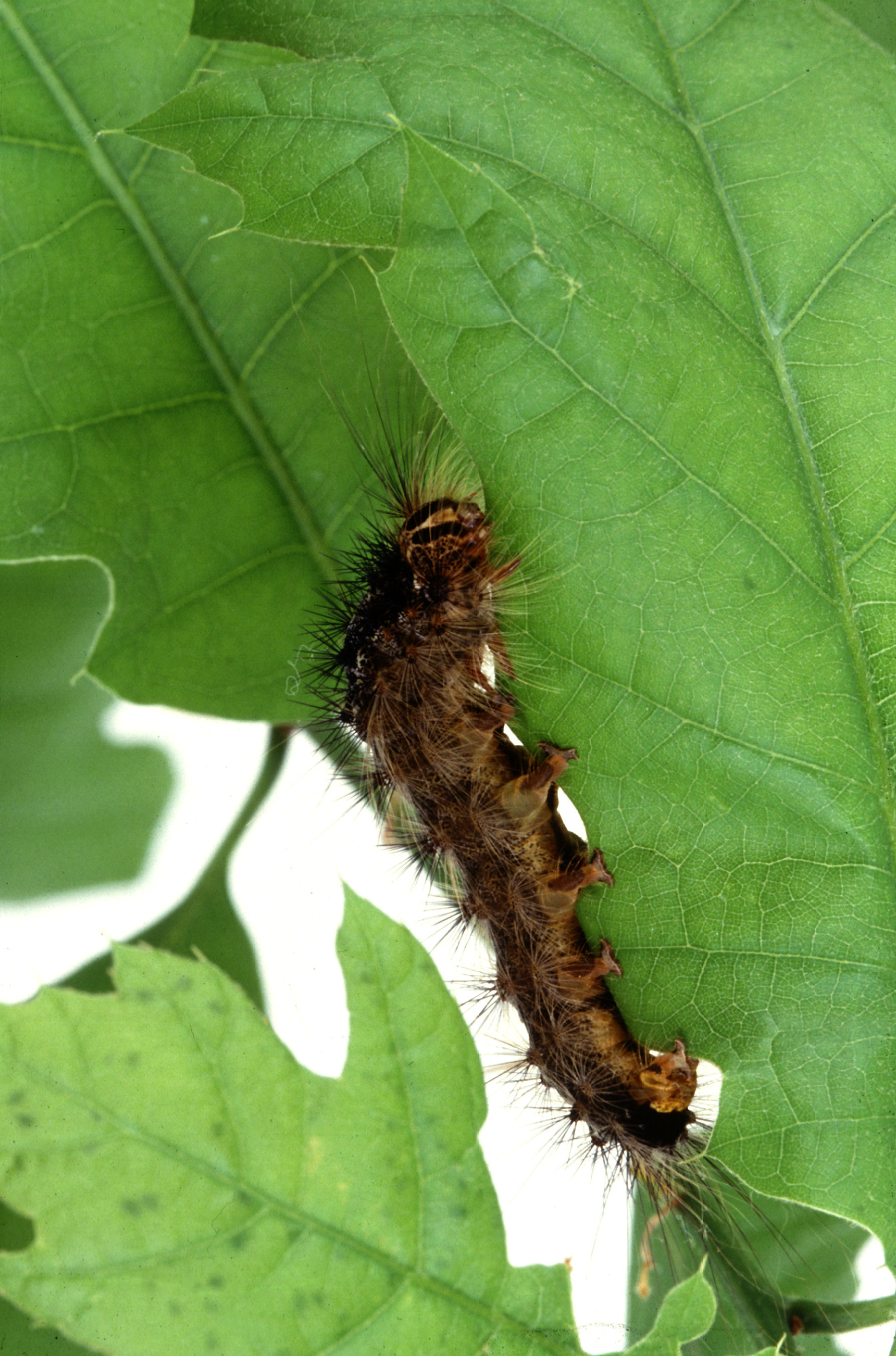Chestnut Oak : Gypsy Moth (And Other Pests & Diseases)

A Gypsy Moth Caterpillar eating the leaves of a tree. These pests have been one of the primary enemies of the White Oak group since their arrival here in the late nineteenth centure (Scott Bauer, May 2003)
Gypsy Moth (And Other Pests & Diseases)
Similar to the White Oak, one of the biggest threats to the Chestnut Oak is the Gypsy Moth, a creature whose caterpillar larvae, after being laid as eggs in the tree, devour the leaves of the tree it was born to (most frequently Oaks and aspens) often stripping it bare. This insect was brought over to the Americas in the mid nineteenth century by Etienne Leopold Trouvelot who hoped to use them to start a silk industry in the Americas, but they were accidentally introduced into the wild after escaping from his home in 1969; I know, quite surprising isn’t it. Twenty years later in the spring of 1889 the population of gypsy moths exploded, wreaking havoc on the surrounding region of his hometown Medford MA. They have been spreading slowly outwards ever since and can be found as far west as Wisconsin and as far south as Virginia. There has been a concerted effort in the past few decades to impede their advances; many millions of acres have been aerially sprayed with pesticides to limit further outbreaks and hopefully wipe out enough of them so that they won’t continue to be a destructive force in the future.
Aside from the Gypsy Moth, the Chestnut Oak may be troubled by a number of other pests and diseases. Other insects that feed on the tree are the Forest Tent Caterpillar, the Half-Wing Geometer, Cankerworms, and the Oak Leaf Roller, each of whom feed, very much like the Gypsy Moth, on the leaves of the Chestnut Oak as larvae.
The other major pests to the Chestnut Oak are the wood borers, particularly the Columbian Timber Beetle. These beetles drill holes through the bark to create tunnels and galleries where they lay eggs. When the larvae hatch they feed on the ambrosia fungi that grows on the gallery walls. Though this process does not affect the tree directly, it leaves the tree vulnerable to infections and diseases that may enter through the open wounds the beetle creates. Common diseases that affect the Chestnut Oak and other Oaks are Oak Wilt, Twig-Blight Fungus, and the Heart Rot Fungus.
